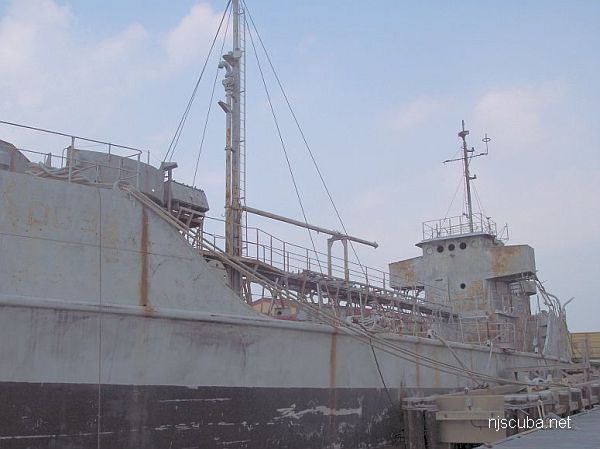What's New ( Old, Actually ) (2/4)
November 2008
Some new pictures of the Redbirds, now five years old.


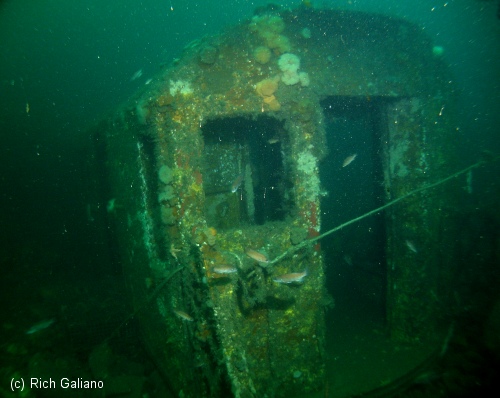
One of the same cars in 2008, five years later. Now at a depth of 130 feet, I surveyed five cars, four of which were completely intact, and one (below) was flattened.
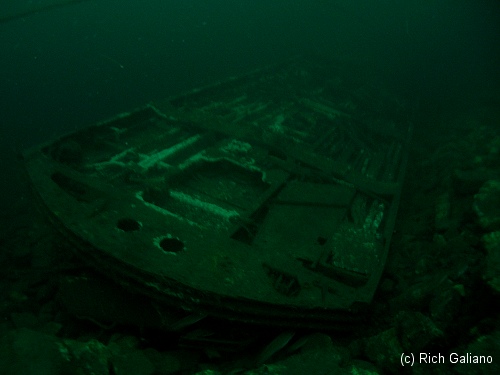
Another one that landed upside-down has crushed itself. Note that this still provides excellent habitat for many creatures. Few of them land completely upside-down like this.
Thanks to Captain Jim of the Gypsy Blood for making a detour so I could stop here.
August 2008
July 2008
June 2008
- SS Miraflores wreck by Gene Peterson, Atlantic Divers
April 2008
- DelJerseyLand Reef
- Brightliner Subway Cars
March 2008
January 2008
This covers the aft end of the wreck, from the propeller up to the boilers. I was going to go up to the bow as well, but the current was tough, and then I got a blackfish with my knife and ended up hand-carrying it back to the boat. I'd always heard stories like that, but I never believed them, until now.
Another major behind-the-scenes overhaul. Html is now based on a "dynamic web template" using MS Expression Web. What this means to me is that the overall look and feel of the site is now 100% consistent and easy to manage. What this means to you is ... nothing really.
November 2007
- New video of the Helis
October 2007
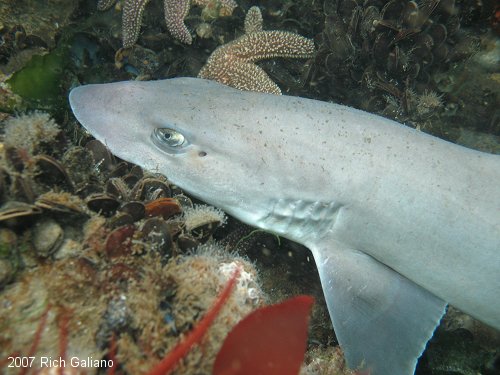
Wrote most tables out of the HTML.
September 2007
Some unfinished videos:
- Cornelius Hargraves
- Pinta
- Cranford
- Travis Tug - My first-ever attempt at video
Added some notes on underwater video to the photography page.
A Better Mask Strap
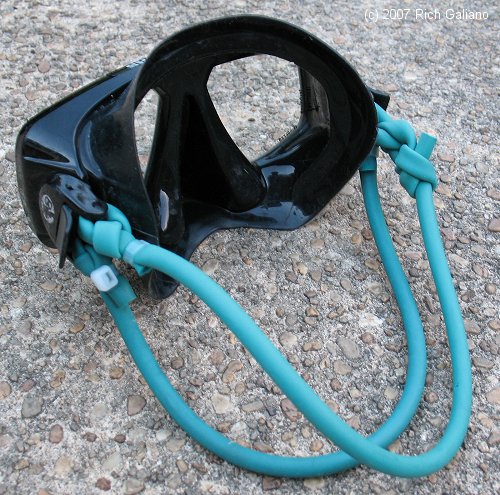
One day I was all geared-up on the boat and just putting on my mask when the strap broke. Reaching down into my box, I pulled out the first thing that looked like it might do the job - a piece of surgical tubing. I threaded it through the buckles and tied some quick knots, and within minutes I was in the water. Almost immediately, I realized that this actually works better than a standard flat strap - the round tubing is much easier to put on, and once you get the length right, there is no need to adjust it, ever. At home, I fiddled with the length a little and made the assembly permanent with some wire ties.
Realizing there was room for a second loop, I added that as well, resulting in redundant mask straps! I have seen acres of debate about what to do when your mask strap breaks - wear it inside your hood, carry a second mask ... this solves all those problems. When you consider just how critical your mask is, and how we all like to have redundant everything, it is a wonder that no one has come up with this before ( hello, DIR people ? ) Of course, the buckle could still break, but I have never seen that happen, and I'm sure with a little thought I could come up with something that couldn't break, like a piece of stainless steel wire in place of the plastic buckle pin.
And when you finally do break one of these straps, it can be repaired instantly on the spot if you simply carry a length of surgical tubing and some wire ties in your tool kit, as every diver should anyway. In fact, with the same materials, you could make quick repairs to fin straps, knife straps, wrist straps, pole spears, gauge holders, regulators, and anything else that requires a bit of stretchy stuff. Since, as far as I know, I seem to have invented this, I will call it a "Jersey Mask Strap."
Passed 3 million hits. In addition, NJScuba is now the top Google search result for "New Jersey Scuba" and also #1 at Yahoo and MSN.

After six years, it was time to try a new web host. The downtime overnight during the switch was so short that I don't think anyone even noticed. In less than a day, I had everything back up and running with just a little help from tech support. Site administration is faster and much easier at the new host. Page loads are snappier, and the bulletin board is much faster. Overall, I am very pleased with the new host, which is actually even a little cheaper than the old one.
If you click on the link above and sign up, I get a referral that goes towards defraying the cost of maintaining the website. If anyone would like to contribute directly, I think I will start accepting small donations as well ( without actually selling advertising. ) You can email me for details.
August 2007
"The Artifact Hunter" is a new book by diving author, Tom Gormley. It has just been released by Safe Scuba Publishing as a 116-page report with laminated color soft color and 8 1/2 by 11 black and white pages.
Topics included in the book: What is an artifact? The serious artifact diver's method. Becoming an artifact diver. The tools of an artifact diver. The tools of an artifact restorer and conserver. Artifact destruction. Electrolytic reduction. Preventive sealing. Iron spike restoration. Brass artifact recovery and restoration. Copper spike and wood restoration. Copper bucket restoration. Glass artifact conservation. Artifact digging. Wood artifact and pulley conservation. Fragile artifact restorations. Leather artifacts. Bones and teeth. Large artifacts. Underwater photo documentation. Artifact show and tell. Diving where taking is restricted. Artifact pedigree and value. Indirect artifact visualization techniques. Project economics. Artifact presentation techniques. Resources, definitions, references, photos, illustrations, and lots more.
Better depiction of shipping lanes on charts.
July 2007
Shadow Divers movie update !!!
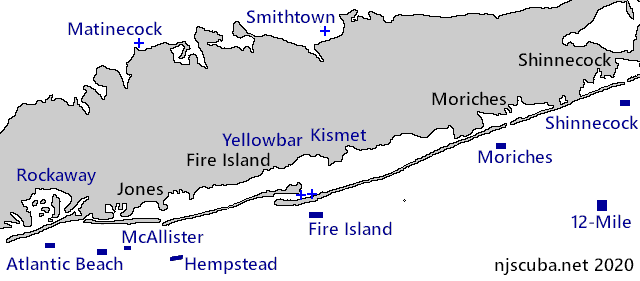
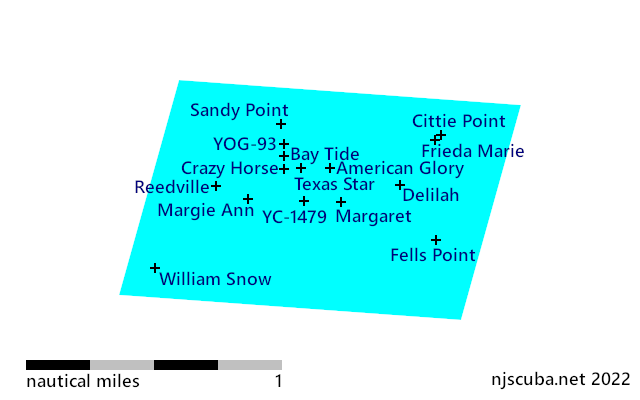
Reorganized and expanded Artificial Reefs section. Updated the Long Island reefs listings. Added one of Delaware's artificial reefs, with 619 Redbirds.
Added screen scrapers for local data buoys to Weather.
Added photos from the Garden State North reef:
- Fatuk
- Redbird car
- Molasses barge

Updated the material on underwater optics & photography, including my new underwater rig

June 2007
Testing out a new camera. Seems to work much better than the old one:
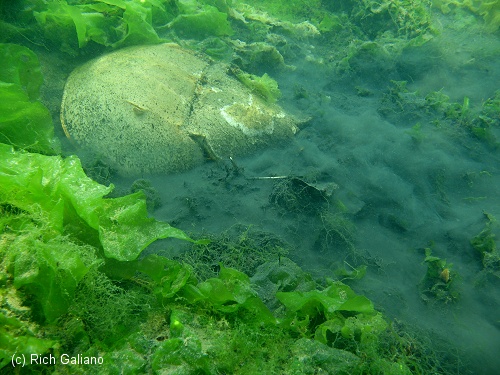
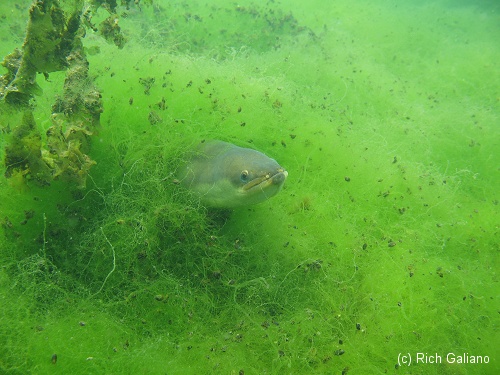
Added a new Message Board where you can post your own notes - dive reports, upcoming trips, news, etc. This is a very full-featured board, customized to fit into the overall site layout. This board is strictly for local diving. Membership is by invitation only. If you would like an account, then contact me and introduce yourself.
Apple Safari browser (beta for Windows) looks ok. Fonts are fuzzy, and there are some JavaScript issues, but it is usable, and will hopefully improve with the final release. I don't see what Jobs was bragging about.
Here's some stuff from way back when ...
- Six Famous Myths of Scuba Diving
- New Jersey Marine Life - Digital Slideshow
2007 Official Fishing Regulations: Recreational | Commercial
Playing with Linux, and took a look at the site in Konqueror. Made some subtle changes to the layout to compensate for odd font rendering in X, and everything looks good, so I added it to the allowed browser list. If someone can send me screenshots of Safari, maybe I'll do the same for that browser as well.
Relocated all binary files for easier site management. Recoded page counters. Cleaned-up and standardized sidebar links.

